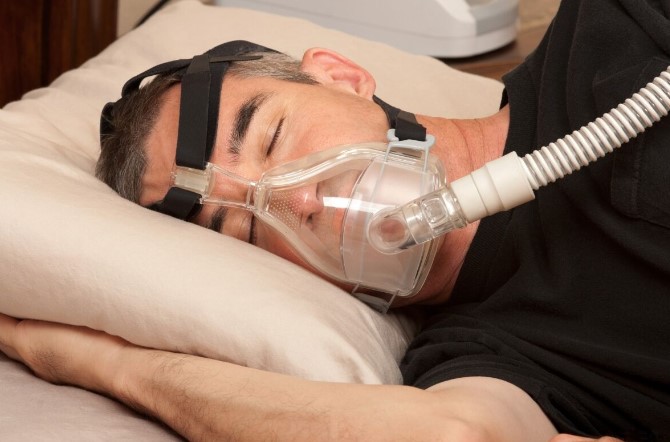Helping kids is key to ending nation’s epidemic
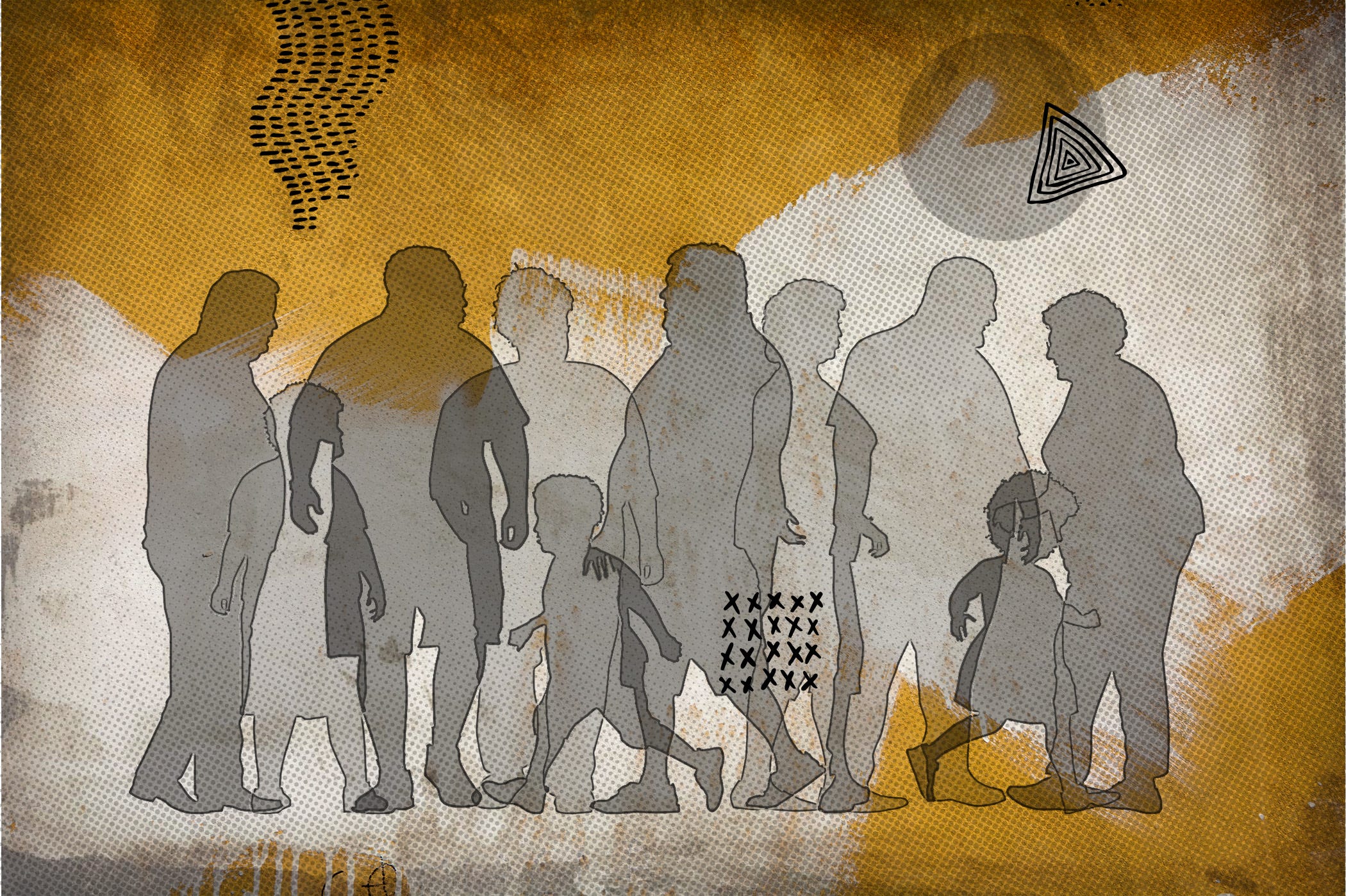
Editor’s note: Part six of a six-part USA TODAY series examining America’s obesity epidemic.
Each of the children in Betty McNear’s home day care has a paper cup with their name neatly written on it and a green bean or pepper plant slowly sprouting inside.
The preschoolers help set the lunch table and clean up afterward, eating a “rainbow” of foods in between. They study their colors with tomatoes and blueberries and learn to share by preparing a meal to feed everyone.
McNear’s approach at My Nana Too, a family child care center she owns and runs in Garfield Heights, Ohio, is more than an academic exercise. It’s also a bulwark against obesity and the lifelong health risks it can bring.
Her “kids” grow up knowing what a balanced diet looks like, how much is an appropriate portion and to favor fruits and vegetables over ultra-processed fast food.
For four decades, Americans have essentially thrown up their hands in the face of this growing epidemic, bemoaning the problem and lack of solutions.
But slowly, responses have been cropping up around the country. Some are as small as a pepper plant in a paper cup. Others, as large as an overhaul of the school lunch program, which is finally combatting obesity rather than contributing to it.
Will they be enough?
It’s too soon to tell, experts say, but the path to addressing widespread obesity has to start in childhood when habits are established, lessons learned and capping weight gain remains realistic.
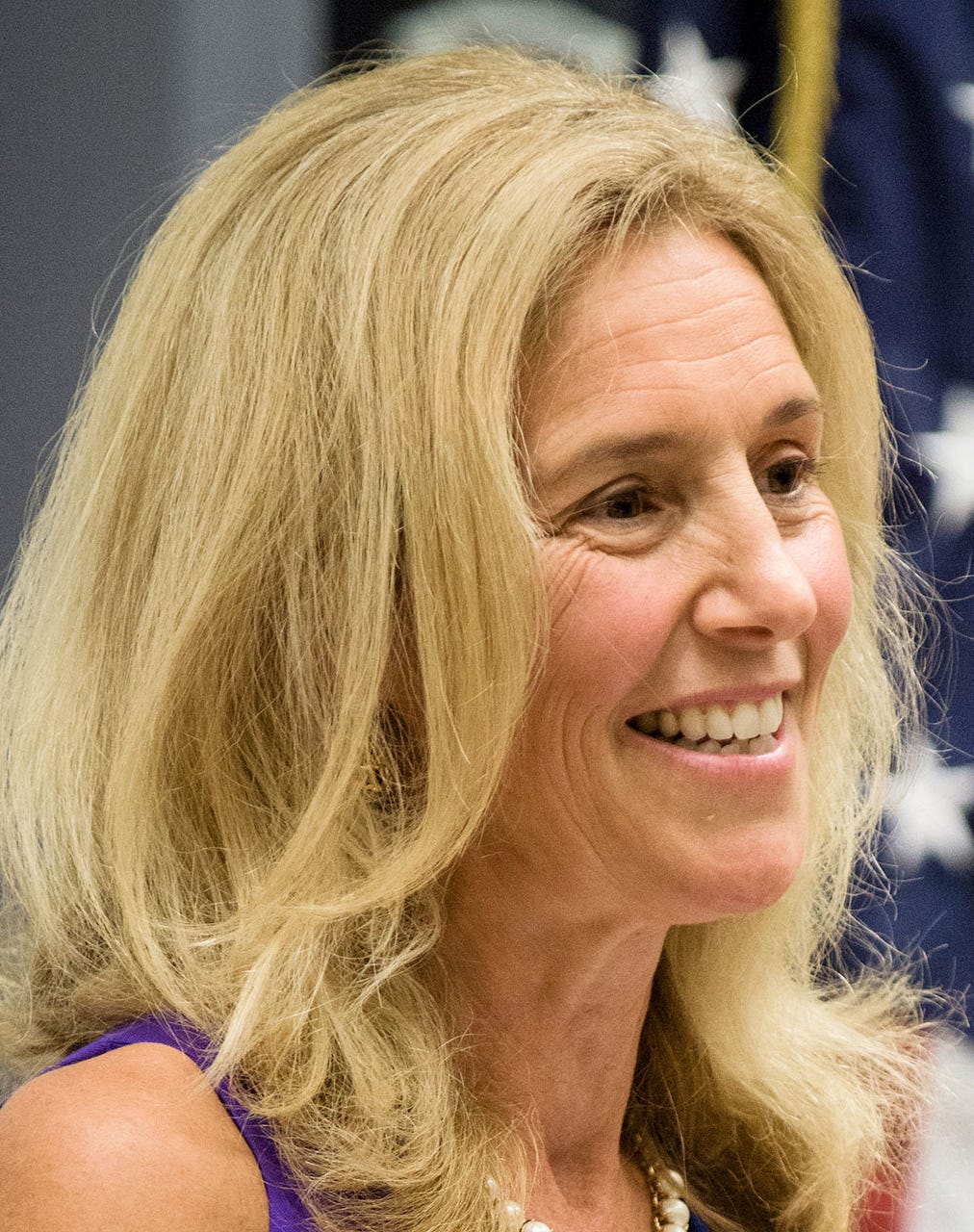
“If we can put our resources into prevention, it’s going to go much further in the longer-term than waiting to treat someone,” said Christina Economos, an expert in pediatric obesity and behavior change and interim dean of the Friedman School of Nutrition Science at Tufts University. “The only way is starting early.”
More than half of adolescents with obesity had met the criteria by age 5, according to one 2018 study. And adolescents were more likely to have obesity if they were relatively large at birth, the study found, meaning risk starts before a child is even born.
People tend to become more sedentary as well as heavier with age – a combination that can lead to the health problems that have made Americans among the unhealthiest of the world’s wealthy populations, plagued by diabetes, high blood pressure and premature death.
In Cuyahoga County, where McNear lives and runs her day care, nearly 1 in 4 preschoolers fits the medical definition of having obesity or overweight. For children of color, it’s roughly 1 in 3.
One in 10 already has blood pressure issues, according to Alison Patrick, a program manager with the Cuyahoga County Board of Health. The situation only got worse during the pandemic, she said.
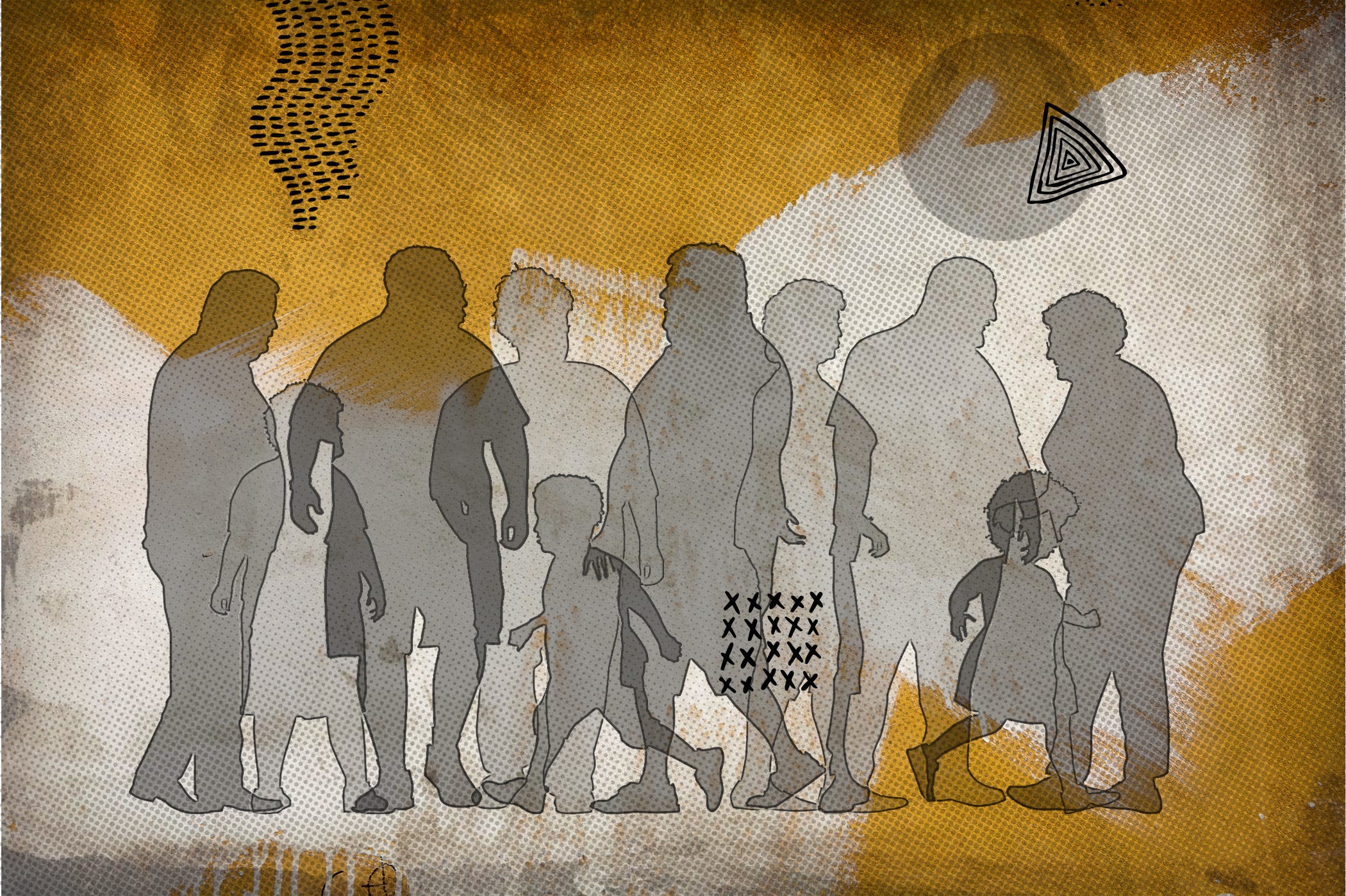
Illustration by Tracie Keeton / USA TODAY; and Getty Images
No one actually knows what happens to the health of children who have obesity and high blood pressure before they graduate from kindergarten. Obesity in early childhood hasn’t been a major issue long enough to have tracked these kids across the lifespan.
But it’s not likely to be good.
“The longer (these problems) exist and persist, the more damaging they’re going to be,” said Dr. William Dietz, who directs the Sumner M. Redstone Global Center for Prevention and Wellness at The George Washington University in D.C.
“The older you get and the more severe the obesity you have in childhood, the more likely it is to persist into adulthood,” Dietz said.
The COVID-19 pandemic made life harder for children in many ways. Not surprisingly, it also led to weight gain.
Between 2019 and 2020 obesity increased by 6{b574a629d83ad7698d9c0ca2d3a10ad895e8e51aa97c347fc42e9508f0e4325d} among elementary school children, according to a study – multiple times the typical annual increase, Dietz said.

Rich Janzaruk/USA TODAY NETWORK
Kids who started out with disadvantages because of race, income, or existing obesity, gained the most weight, the study found. Black and Hispanic children added more pounds than whites and girls more than boys. Children who started out carrying extra weight were likely to have gained the most.
Although it hasn’t been extensively studied, Dietz expects school-age children gained the most during the pandemic because they were too young to go out on their own. They lacked the structure of school and missed the healthy meals and physical activity provided there.
Among 700 children in a study at the Cambridge Health Alliance in Massachusetts, almost all gained weight during the pandemic, but children ages 2 to 5 added more than older kids, as did Spanish-speaking and Brazilian children, said Dr. Wudeneh Mulugeta, a preventive medicine specialist who led the research.
Traumatic experiences, which many children went through during the pandemic, are strongly associated with unhealthy weight, said Dr. Brian Jenssen, a primary care physician and researcher at the Children’s Hospital of Philadelphia and the University of Pennsylvania.
Perhaps children gained weight during the pandemic, in part, because giving them something delicious to eat was one of the few ways parents could give them pleasure at a difficult time, Jenssen said.
Economics played a role, too.

For children whose parents receive government-funded health insurance, childhood obesity rates worsened early in the pandemic and then stabilized at the higher level, Jenssen said. Increases in obesity leveled off for those with commercial health insurance.
Dr. Ihuoma Eneli, a pediatric obesity expert, said she and her colleagues on the National Academy of Sciences Roundtable on Obesity Solutions used the pandemic to take a step back and rethink how they were addressing excess weight in children.
They realized that to effectively deal with obesity, they needed to shift their own and the public’s “mental model” away from blame. Yes, there are certain things parents and children can do, but there’s a lot that’s beyond an individual’s control, said Eneli, who directs the Center for Healthy Weight and Nutrition at Nationwide Children’s Hospital in Columbus, Ohio.
Families might have eaten poorly during the pandemic because of financial constraints or stress, but that’s not the full story. “Sitting on top are things in your environment, some of which we can control and some of which we cannot control,” she said.
People talk about weight and obesity as a personal choice, but a 2-year-old isn’t choosing to eat gummy worms for breakfast, as Jenssen saw recently in his clinic. “Who’s giving them that food? What’s the environment they’re living in that’s causing that?” he asked.
“The No. 1 reason a child struggles with weight issues is a family struggles with weight issues.”
For anyone of a certain age, thoughts of school lunch bring up memories of “mystery meat” and Pizza Fridays. Vending machine soda and junk food often staved off afternoon hunger pangs.
But today’s children generally eat healthier food at school than they do at home, with well-balanced meals and lots of fruits and vegetables. Food waste hasn’t increased, studies show, so they’re actually eating what they’re served. And in many schools, vending machines have been purged of sodas and the unhealthiest snacks.
Kids also move more during the school year than over the summer, research finds, so attending school is protective against weight gain.
A study this spring from the RAND Corp. found that school food used to contribute to weight gain, but now may help reduce the signs of obesity. “We’ve come a long way,” said Andrea Richardson, a RAND policy researcher who led the new research.

ASSOCIATED PRESS
In 2010, then-first lady Michelle Obama helped pass the Healthy, Hunger-Free Kids Act, which is credited with transforming school food from “obesogenic” to healthy.
During the pandemic, the federal government allowed schools to lift restrictions on school meal payments, enabling all students, not just those with the lowest-earning parents, to get food for free.
The expanded program made a substantial difference in kids’ eating habits, a handful of childhood nutrition experts said. At the end of June, Congress passed legislation extending the program through next school year, but many kids will have to start paying again for their meals.
Providing the food for free guaranteed that children who might otherwise have gone hungry or brought junk food from home had access to healthy food, Richardson and others said. It got rid of the stigma children face when they have to show a card proving they’re eligible for reduced-price food. And it removed the issue of children being denied food if their parents weren’t up to date on school meal bills.
“Those supports, those waivers are still going to be very dearly needed,” Richardson said.
If the tide has turned against unhealthy food in schools it still has a long way to go in other places, said Marlene Schwartz, director of the Rudd Center for Food Policy & Health at the University of Connecticut.
The same push during the Obama administration that led to changes in school meals didn’t end the problem of food marketing to youth, Schwartz said.
“The food industry is remarkably powerful,” she noted.
Junk food can be marketed on virtually any TV program except those aimed at the youngest children, like “Blues Clues,” she said. The amount of marketing children are exposed to at home makes a big difference in the food they eat.
“Parents have to pick their battles,” Schwartz said. “I don’t blame the parents. There are so many times you have to say no.”
The single-biggest target for pediatric obesity experts: sugary drinks.
A drink might be labeled “100{b574a629d83ad7698d9c0ca2d3a10ad895e8e51aa97c347fc42e9508f0e4325d} vitamin C,” for instance, making harried parents rushing through the grocery store think it’s real juice, when in fact it’s mostly sugar water, Schwartz said. “Fruit drinks – that is one product category I’d love to see disappear.”
Some companies are now pulling sugar out of drinks, pitching them to parents as “healthier,” but they’re filled with artificial sweeteners, which parents don’t know are there and, which Schwartz said, haven’t been adequately studied for safety in children.
“We really see these fruit drinks as not just doing harm in the moment, but setting the stage for someone who is not going to want to drink plain water because they feel like drinks are supposed to be sweet,” she said.
Parents can do many other things to help their child avoid obesity or stop it from getting worse, said Eneli of Nationwide Children’s Hospital.
“The first thing is to let that child know they are loved and accepted,” she said. Particularly for children at a time of so much public unrest and tension about race, she said, home “has to be a safe harbor for that child.”
Within the family, parents should focus on concrete steps they can take to help modify behaviors, which she described as “food, fitness, feelings and sleep.”
If a child is not sleeping well, there may be something going on that needs to be addressed, unrelated to obesity. Pediatricians can often help think through such issues, she said.
The weight of children and young adults is profoundly affected by lack of sleep, said Dr. Esra Tasali, director of the UChicago Sleep Center. “These links are much stronger than in middle age or older adults,” she said. “We have to protect children’s sleep.”
Parents can make some changes without much input from the child, Eneli said, such as switching the family to low-fat milk from whole milk. They also can encourage children to choose what physical activities to participate in, whether walking the family dog, joining a team, or playing on a playground.
Federal guidelines recommend school-age children and teens get at least an hour of moderate-to-vigorous exercise every day, though fewer than 1 in 4 American children met that standard in 2016.
Globally, children and adolescents spent 20{b574a629d83ad7698d9c0ca2d3a10ad895e8e51aa97c347fc42e9508f0e4325d} less time exercising since early 2020 than they did before the arrival of COVID-19.
Active young people have stronger bones, better memory, higher academic performance, less depression and reduced risk of later health problems, studies show.
Eating regular meals helps combat overeating, said Denise Wilfely, an expert in eating disorders at the Washington University School of Medicine in St. Louis.

TIM KIMZEY/Greenville News
“It’s about having the whole family come on board,” she said, “changing the whole family, so the child isn’t singled out … making sure those healthy behaviors get turned into habits.”
Addressing weight stigma and self-stigma is crucial, as well, Wilfley said. If the child sees a parent too self-conscious to put on a swimsuit, they learn to be self-conscious. Parents who are comfortable in their own bodies and enjoy an activity without worrying about what others are thinking, teach a different lesson, she said.
Because of the link between self-directed dieting and eating disorders, some worry that helping children manage their weight will backfire, leading to disordered eating. Obesity in childhood does increase the risk for binge eating later in life, Wilfley said, but studies show it’s the body image dissatisfaction, skipping meals and fasting that leads to disordered eating, not healthy weight management programs.
Wilfley said she tells families to make it simple for the child to choose healthy foods. It isn’t fair for the child to be denied dad’s brownies and soda.
“Unhealthy food is so easy,” she said. “How can you make it easy in your home environment so (nutritious food can) outcompete these other things that ultimately aren’t in the interest of your family?”
In Greenville County, South Carolina, anti-obesity efforts have focused on improving access to green space as well as healthy foods.
The county, which includes more than 80 square miles, sits in the foothills of the Great Smoky Mountains, near the borders of North Carolina, Tennessee and Georgia. “We have gorgeous and amazing parks,” said Sally Wills, executive director of the nonprofit LiveWell Greenville.
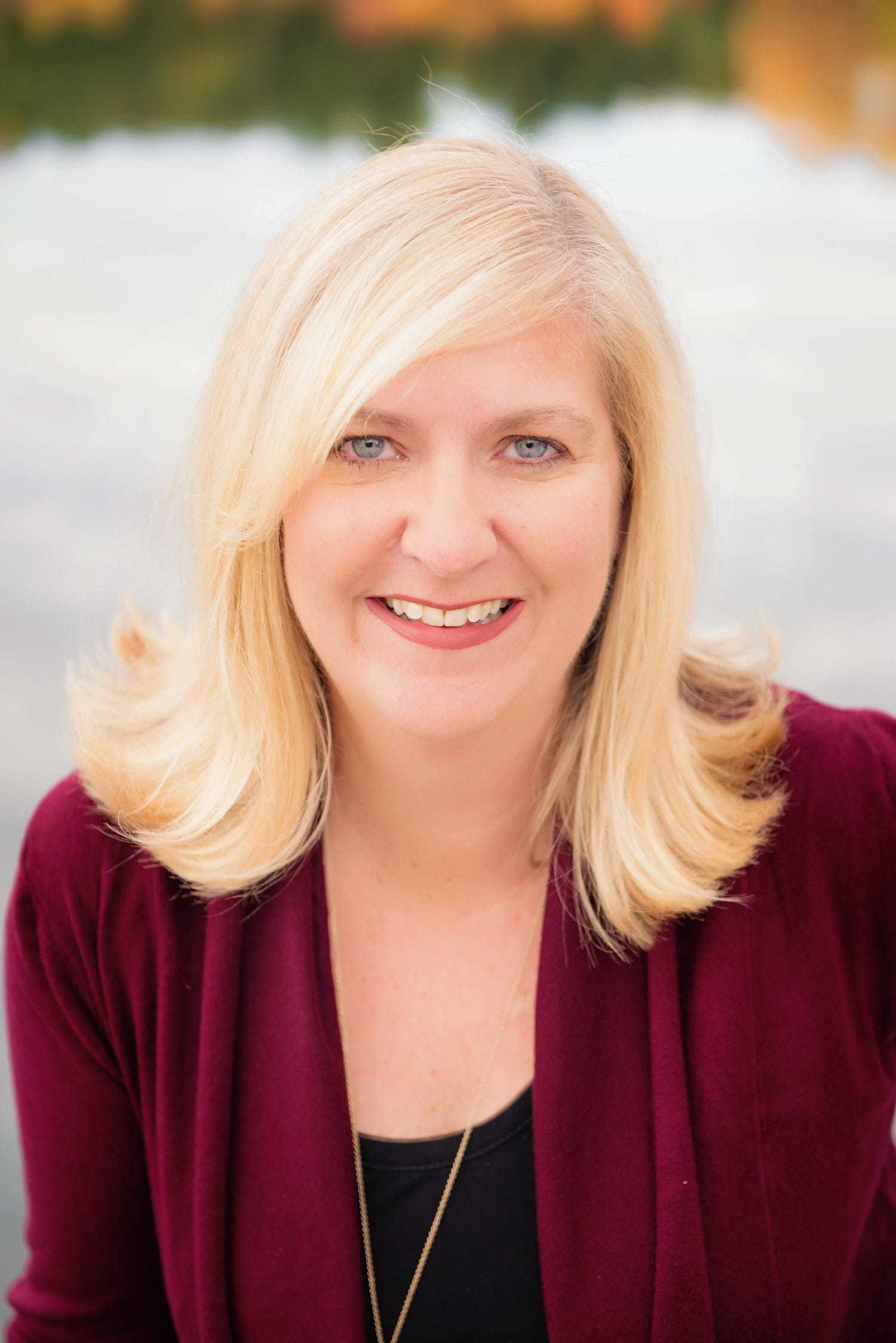
But not everyone could access them. The 80 parks, while fairly equitably distributed across the county, were not equally accessible, with some lacking sidewalks, night lighting, or wheelchair access.
In some neighborhoods, it was not safe or socially acceptable to let children go outside to play. “So, how do we make it OK, so our children are able to be outside?” Wills asked.
LiveWell has been trying to capitalize on the county’s strengths, including its 93 schools. “A playground that is not in use from 5 p.m. until dark becomes an asset for the whole community,” she said. But first, LiveWell had to help resolve logistical and liability issues with each district.
LiveWell also provides healthy food for residents whose access is limited because of income or lack of grocery stores. The organization advocates for the state to continue to provide matching funds, so for every $5 spent on eligible food, a shopper can get $10 worth of produce.

ALEX HICKS JR./HERALD-JOURNAL
“Food insecurity is one of the main drivers of pediatric obesity,” Wills said.
Policy changes could play a critical role in scaling efforts like LiveWell’s, said Jamie Bussel, a senior program officer with the nonprofit Robert Wood Johnson Foundation.
In the second year of the pandemic, financial support offered by the Biden administration, like the child tax credit, reduced food insecurity for kids. But most of those policies were short-term patches, like universal free school lunches that have since gone away.
“We need to be thinking bigger and bolder about lasting solutions,” Bussel said.
Clearly, poverty is connected to obesity, but so are factors like housing, health care, and education, she said.
In her foundation’s 2021 State of Childhood Obesity report, obesity rates ranged from just under 9{b574a629d83ad7698d9c0ca2d3a10ad895e8e51aa97c347fc42e9508f0e4325d} among children whose parents were in the highest-income group to 23{b574a629d83ad7698d9c0ca2d3a10ad895e8e51aa97c347fc42e9508f0e4325d} among those in the lowest-income groups.
Bussel said she’d like to see programs that support healthy eating, routine physical activity, ensuring a child has a safe place to call home, high-quality health insurance, early care and education.
“All of those things matter in profound ways around whether a child will grow up healthy and at a healthy weight trajectory,” she said. “We need to be thinking about how do we have systemic change.”

Many places have experimented with public policies designed to limit junk food consumption and encourage healthier choices, noted Dr. Neena Prasad, who directs Bloomberg Philanthropies’ Food Policy and Maternal and Reproductive Health Programs.
Some restaurants have removed soda as the default drink with kids’ meals.
Soda taxes have cut consumption somewhat in Philadelphia (including among teens) and substantially in Seattle.
In Berkeley, California, grocery stores are no longer allowed to put sugary or salty snacks in the checkout aisle, where people, waiting to make their purchases, may be particularly tempted.
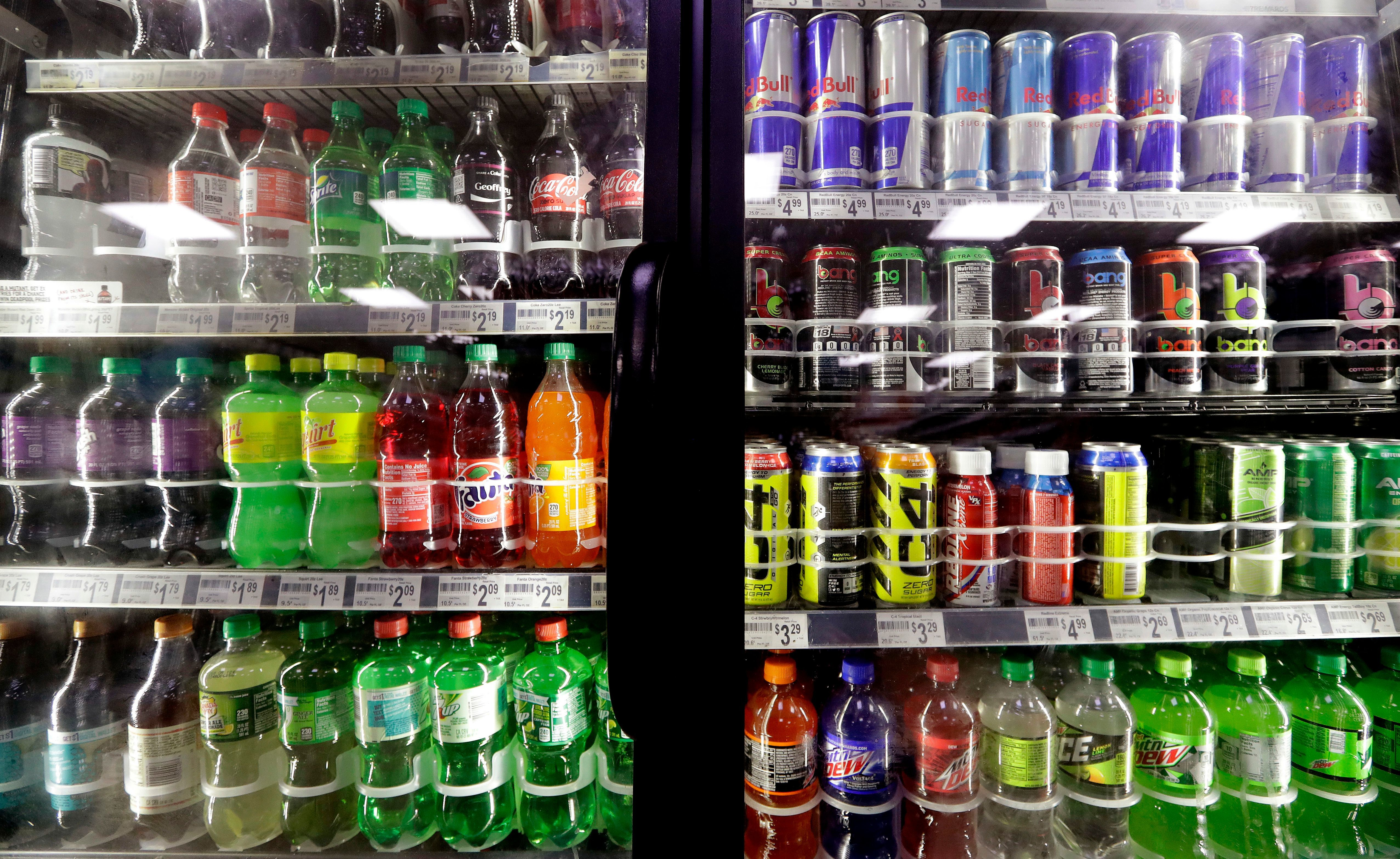
ASSOCIATED PRESS
In New York City, a new “Sweet Truth Act” will require restaurant chains to warn customers of prepackaged foods and beverages containing substantial amounts of added sugar.
“There’s innovative stuff that’s happening,” Prasad said.
But all of these will need to be extended well beyond local communities to make a difference in the nation’s widespread obesity epidemic, she said.
She and others are encouraged by the White House’s plans to host a formal conference on Food, Nutrition, Hunger, and Health in September to address many of these issues. The last one was held by President Richard Nixon more than 50 years ago, which established government support for nutrition programs for low-income Americans.
The conference has five “pillars,” including making healthy food more accessible and affordable and making it easier for people to be more physically active.
These goals are “meant to help identify actions that can be taken by all parts of society – including the federal government; local, state, territory, and tribal governments; nonprofit and community groups and private companies.”
Patrick, with Ohio’s Cuyahoga County Board of Health, said early childhood education needs to better integrate health.
“It’s not the sole responsibility of a family to raise healthy kids,” she said. “It is really the job of our community to ensure that kids are very well supported in these areas.”
When restaurants closed during the pandemic and stopped buying from local farmers, the health department stepped in and helped connect farms to school systems and child care programs. “We were still able to carry the healthy eating message across a really unique moment in time,” she said.
The big challenge, Patrick and others said, will be for the enthusiasm to continue even after the acute phase of the pandemic ends.
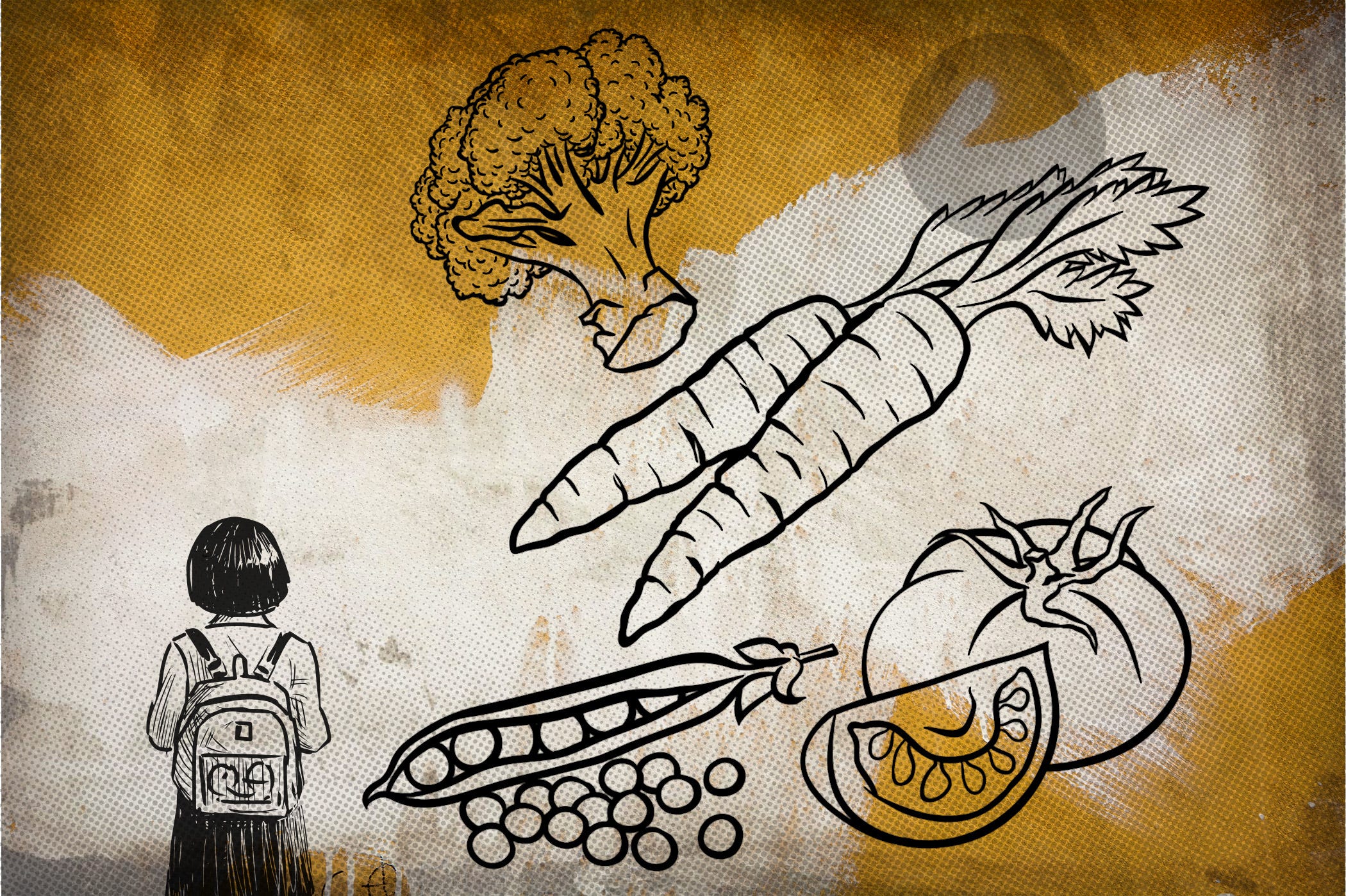
Illustration by Tracie Keeton / USA TODAY; and Getty Images
Dr. Saba Khan, an attending physician with the Healthy Weight Program at Children’s Hospital of Philadelphia and director of its Food Pharmacy, said “success” to her right now means keeping her programs going for the next five years.
She wants to continue to build trusting relationships with and healthy food for families who live in food deserts, aren’t well informed about nutrition, or can’t afford to eat well.
“It’s a systemic issue,” she said. “It is a lifestyle issue, not necessarily dictated by that being or that family or that community, but it’s very much ingrained in resources,” she said. “That’s where we can see why this is still a global, national, local problem.”
Khan said programs like hers also need to be scaled up so they’re “not just small and pilot-like, but that cities and communities and governments can engage in to start to really change things.”
McNear, who has been caring for children for 60 years, 20 of them professionally, said she tries to educate her parents along with their kids.
“You have to pull them in, too, but do it in a loving way,” she said.
She keeps a lending library of nutritional information. She quizzes parents whose child is gaining weight about what they’re eating at home and tells those who can afford healthy food that it’s worth spending a little more to make sure their child gets the best start in life.
And she’s careful not to stigmatize her kids.
“I don’t use the word ‘fat’ here,” she said. “I just tell them we might be a little ‘fluffy.’
“We don’t criticize. We don’t bully. We all come in all different shapes and sizes.”
Contact Karen Weintraub at [email protected].
Health and patient safety coverage at USA TODAY is made possible in part by a grant from the Masimo Foundation for Ethics, Innovation and Competition in Healthcare. The Masimo Foundation does not provide editorial input.





